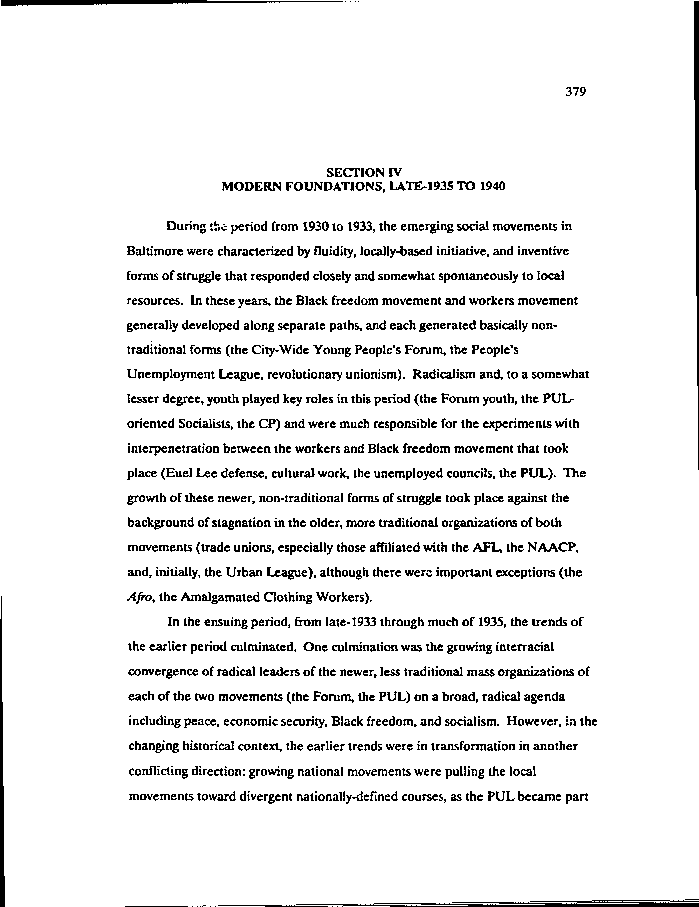|
379
SECTION IV
MODERN FOUNDATIONS, LATE-1935 TO 1940
During the period from 1930 to 1933, the emerging social movements in
Baltimore were characterized by fluidity, locally-based initiative, and inventive
forms of struggle that responded closely and somewhat spontaneously to local
resources. In these years, the Black freedom movement and workers movement
generally developed along separate paths, and each generated basically non-
traditional forms (the City-Wide Young People's Forum, the People's
Unemployment League, revolutionary unionism). Radicalism and, to a somewhat
lesser degree, youth played key roles in this period (the Forum youth, the PUL-
oriented Socialists, the CP) and were much responsible for the experiments with
interpenetration between the workers and Black freedom movement that took
place (Euel Lee defense, cultural work, the unemployed councils, the PUL). The
growth of these newer, non-traditional forms of struggle took place against the
background of stagnation in the older, more traditional organizations of both
movements (trade unions, especially those affiliated with the AFL, the NAACP,
and, initially, the Urban League), although there were important exceptions (the
Afro, the Amalgamated Clothing Workers).
In the ensuing period, from late-1933 through much of 1935, the trends of
the earlier period culminated. One culmination was the growing interracial
convergence of radical leaders of the newer, less traditional mass organizations of
each of the two movements (the Forum, the PUL) on a broad, radical agenda
including peace, economic security, Black freedom, and socialism. However, in the
changing historical context, the earlier trends were in transformation in another
conflicting direction: growing national movements were pulling the local
movements toward divergent nationally-defined courses, as the PUL became part
|

